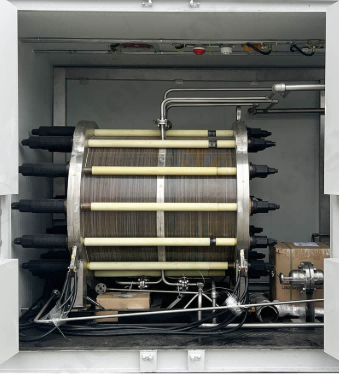Green Hydrogen Production Why Alkaline Electrolyzers Are Leading the Market
Introduction
As the world shifts toward renewable energy, green hydrogen—produced using electrolysis powered by clean electricity—has emerged as a key player in decarbonizing industries like transportation, steelmaking, and chemicals. Among the different electrolyzer technologies, alkaline electrolyzers (ALK) currently dominate the market. But why?
In this blog, we’ll explore the advantages of alkaline electrolyzers, their role in green hydrogen production, and why they remain the preferred choice for large-scale projects.
What Are Alkaline Electrolyzers?
Alkaline electrolyzers have been around for decades and are one of the most mature technologies for hydrogen production. They use an alkaline solution (typically potassium hydroxide, KOH) as an electrolyte and nickel-based electrodes to split water (H₂O) into hydrogen (H₂) and oxygen (O₂) through an electrochemical reaction.
Key Reaction:
At the cathode: 2H₂O + 2e⁻ → H₂ + 2OH⁻
At the anode: 2OH⁻ → ½O₂ + H₂O + 2e⁻
Why Alkaline Electrolyzers Dominate the Market
1. Proven Technology & Reliability
Alkaline electrolyzers have been used for industrial hydrogen production since the early 20th century. Their long track record makes them a low-risk choice for large-scale projects compared to newer technologies like PEM (Proton Exchange Membrane) or SOEC (Solid Oxide Electrolyzers).
2. Lower Capital Costs
One of the biggest advantages of ALK systems is their cost-effectiveness. They use non-precious metals (e.g., nickel instead of platinum or iridium), making them significantly cheaper than PEM electrolyzers, which rely on expensive catalysts.
3. Scalability for Industrial Use
Alkaline electrolyzers are ideal for large-scale hydrogen production, such as ammonia plants or refineries.
4. Longer Lifespan & Durability
With fewer degradation issues than PEM systems, ALKs often have lifespans about 20 years, reducing long-term operational costs. Their robust construction makes them suitable for harsh industrial environments.
5. Compatibility with Renewable Energy
While ALKs traditionally required stable power inputs, advancements in dynamic operation have improved their ability to work with intermittent renewable sources like wind and solar.
Challenges & Future Improvements
Despite their advantages, alkaline electrolyzers face some limitations:
Lower Efficiency at Partial Loads – They perform best at steady, high-capacity operation.
Slower Response Times – Less flexible than PEM electrolyzers for rapid start-stop cycles.
Liquid Electrolyte Maintenance – Requires periodic refilling and corrosion management.
However, innovations such as:
Advanced electrode materials (improving efficiency)
Zero-gap configurations (reducing energy losses)
Hybrid systems (ALK + PEM)
are helping ALKs stay competitive.
Conclusion: Alkaline Electrolyzers Lead the Green Hydrogen Race
While newer electrolyzer technologies are gaining attention, alkaline electrolyzers remain the market leader due to their cost efficiency, scalability, and proven reliability. As green hydrogen demand grows, ALKs will continue playing a crucial role in the energy transition—especially for large industrial applications.
For now, they are the go-to solution for cost-effective, large-scale green hydrogen production.
